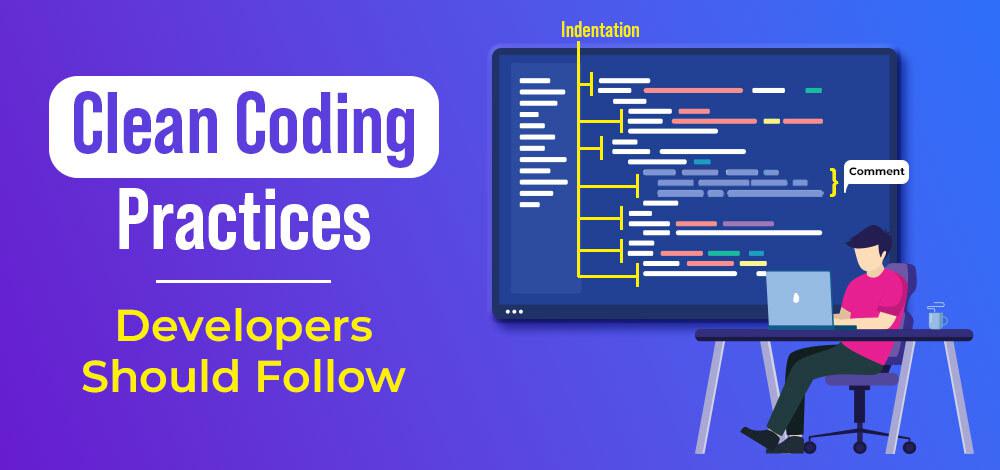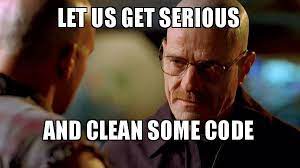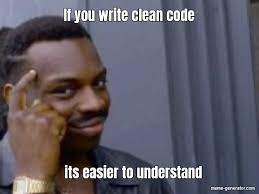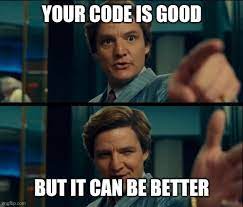Best Practices for Writing Clean and Maintainable Code
 Laddu Kumar Roy
Laddu Kumar Roy
Introduction:

In the world of software development, writing code is just the beginning. Ensuring that your code is clean and maintainable is essential for the long-term success of any project. Clean code not only makes it easier for you to understand and work with your own code but also facilitates collaboration with other developers. In this blog post, we'll explore a set of best practices that can help you write clean and maintainable code, leading to more efficient development and easier maintenance.
1. Meaning and Benefits of Clean Code:

Clean code is not merely about aesthetics; it has tangible benefits for developers and projects alike. Clean code is readable, understandable, and easy to modify. When you maintain clean code:
Collaboration becomes smoother as other developers can quickly grasp your intent.
Bugs are reduced since clean code is less prone to hidden errors.
Maintenance efforts are minimized, as making changes is straightforward.
2. Naming Conventions and Clarity:
Clear and meaningful naming conventions are the foundation of clean code. Well-named variables, functions, and classes make your code self-documenting. Consider these tips:
Use descriptive names that convey the purpose of a variable or function.
Avoid overly abbreviated names or single-letter variables.
Choose consistent naming styles across your codebase.
For instance, compare getUserInfo() with fetchUserDataFromDatabase(); the latter provides a clearer understanding of what the function does.
3. Code Comments and Documentation:
While clean code should be self-explanatory, well-placed comments and thorough documentation enhance understanding and maintainability:
Comments should explain the "why" and not just the "what" of your code.
Document public APIs and complex logic with clear explanations and usage examples.
Keep documentation up-to-date to ensure accuracy.
Remember, well-written code should tell a story, and comments serve as helpful annotations.
4. Functions and Methods:
Applying the Single Responsibility Principle (SRP) to functions and methods makes your code more modular and easier to maintain:
Functions should ideally do one thing and do it well.
Break down complex functions into smaller, focused units of work.
Reusable functions reduce redundancy and improve overall codebase efficiency.
By adhering to SRP, your code becomes more organized and understandable, and individual functions become building blocks for larger features.
5. Code Formatting and Indentation:
Consistent code formatting enhances readability and reduces cognitive load for both you and other developers:
Use consistent indentation and formatting styles.
Consider using automated tools like linters and formatters to enforce formatting rules.
Consistent formatting makes it easier to spot errors and understand code structure.
By adhering to a consistent style, your codebase maintains a professional and clean appearance.
6. Version Control and Git:
Version control is a cornerstone of modern software development. Utilize Git and its branching strategies for efficient collaboration and maintenance:
Branching enables you to work on features or fixes independently.
Pull requests facilitate code reviews, catching errors before they reach the main codebase.
Meaningful commit messages provide context and improve traceability.
Version control ensures that your codebase remains organized, and changes are tracked effectively.
7. Error Handling and Exception Management:
Effective error handling prevents unexpected crashes and improves user experience:
Anticipate potential errors and handle them gracefully.
Provide informative error messages for troubleshooting.
Use try-catch blocks for handling exceptions in appropriate scenarios.
Robust error handling ensures that your application can recover gracefully from unexpected situations.
8. Testing and Test-Driven Development (TDD):
Writing tests alongside your code, following the Test-Driven Development (TDD) approach, increases code quality and maintainability:
Write tests that validate the behavior of your code.
TDD encourages small, incremental changes, which are easier to manage.
Automated tests catch regressions and ensure modifications don't break existing functionality.
TDD is a powerful technique that leads to a more reliable and maintainable codebase.
9. Code Reviews and Collaboration:

Code reviews are a collaborative practice that improves code quality and knowledge sharing:
Reviewers catch errors and provide feedback, improving the overall codebase.
Reviewers also learn from the code they review, fostering a culture of continuous learning.
Use code review tools to facilitate the process and keep a record of feedback.
Code reviews contribute to a collective understanding of the codebase and help maintain consistency.
10. Continuous Integration and Deployment (CI/CD):
CI/CD pipelines automate testing and deployment, ensuring that your codebase remains functional and deployable:
Automated tests validate changes before merging them into the main codebase.
CI/CD enables frequent, reliable releases.
Popular tools like Jenkins, Travis CI, and GitHub Actions facilitate CI/CD implementation.
CI/CD streamlines the process of maintaining a healthy and up-to-date codebase.
Conclusion: Writing clean and maintainable code is an investment that pays off over the entire lifecycle of a software project. The practices discussed in this blog post help you create code that is easier to understand, collaborate on, and maintain. By adopting these best practices, you'll contribute to a more efficient development process and set the stage for the long-term success of your software projects. So, let's strive for clean, maintainable code and build a more robust and sustainable software ecosystem.
Subscribe to my newsletter
Read articles from Laddu Kumar Roy directly inside your inbox. Subscribe to the newsletter, and don't miss out.
Written by

Laddu Kumar Roy
Laddu Kumar Roy
👋 CSE student @NITPatna1 | Enthusiastic about JAVA, DSA, and development | Eager to learn and share | Let's connect and explore the tech world together! 🚀